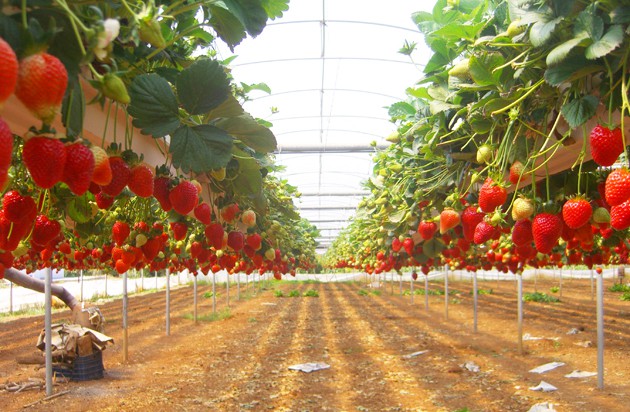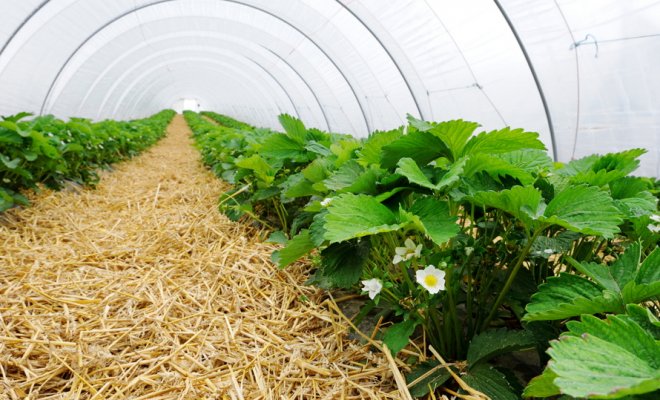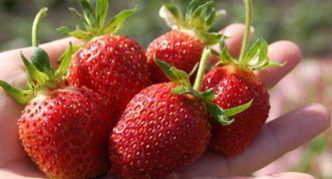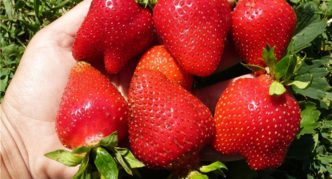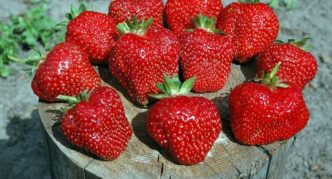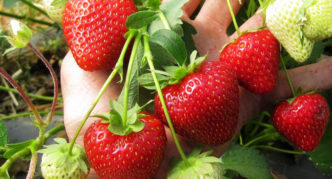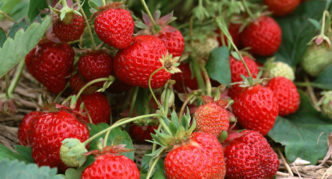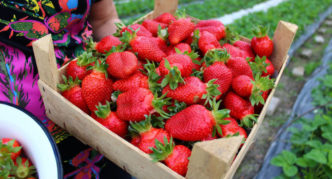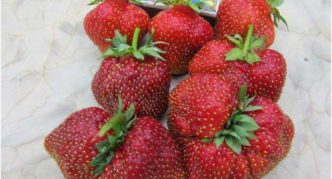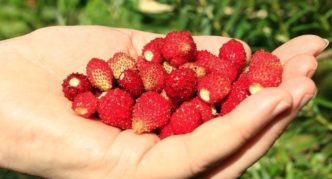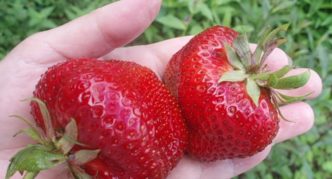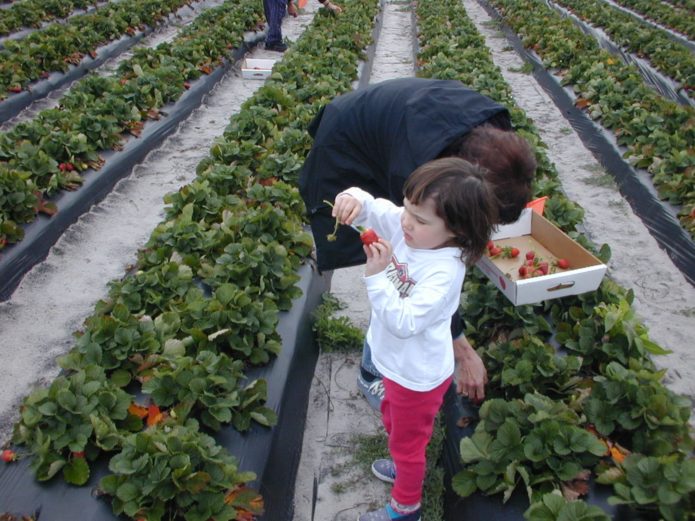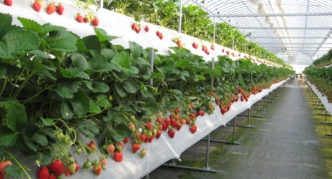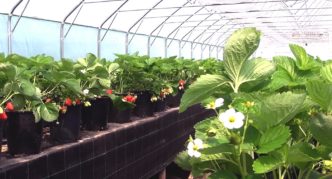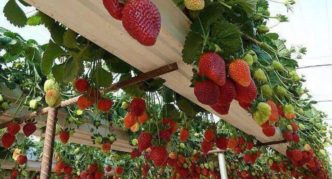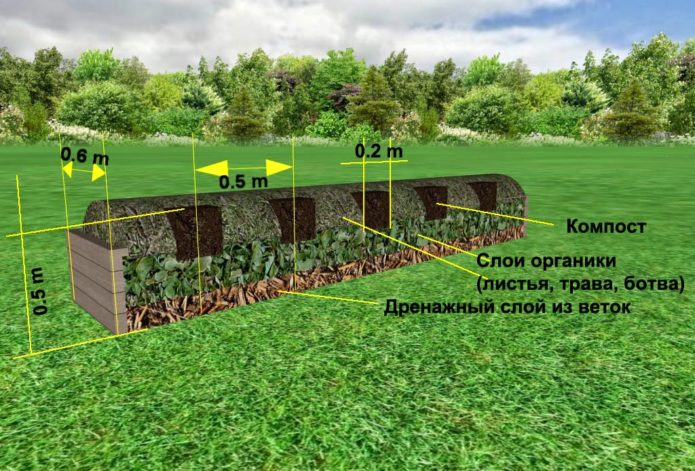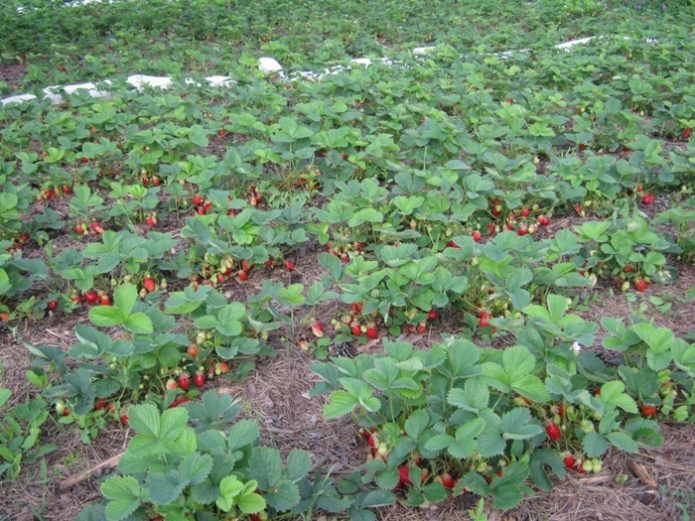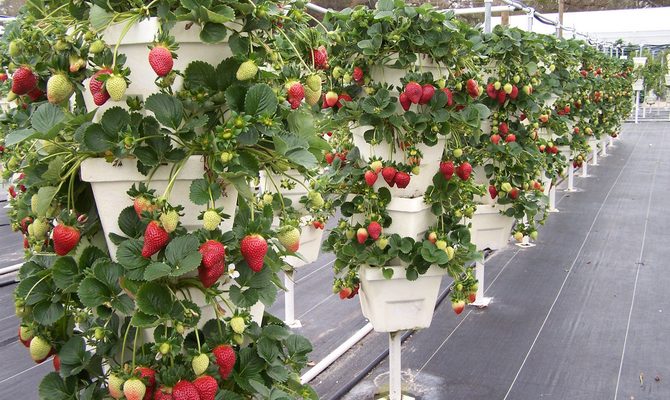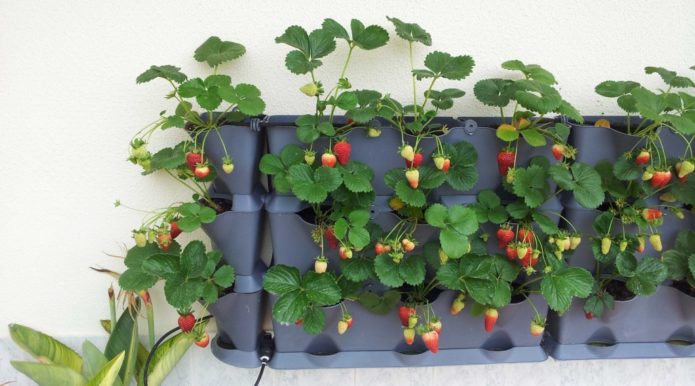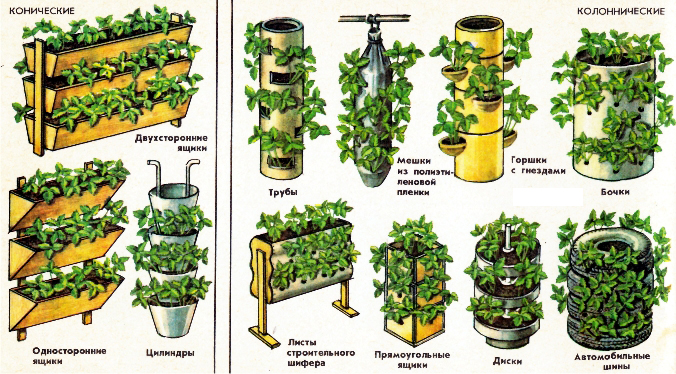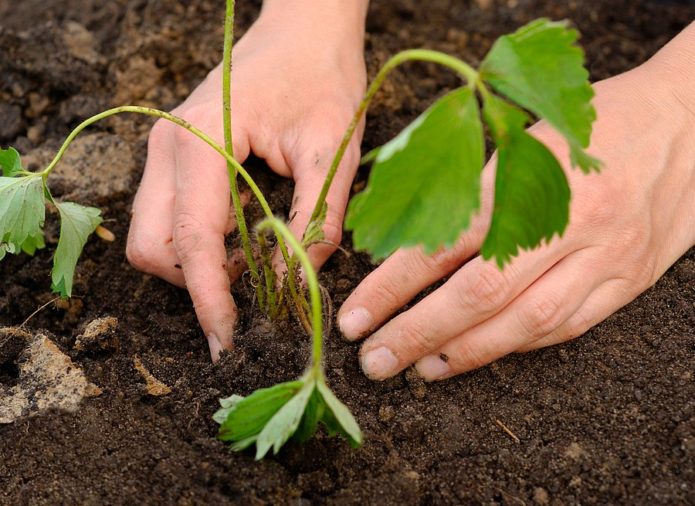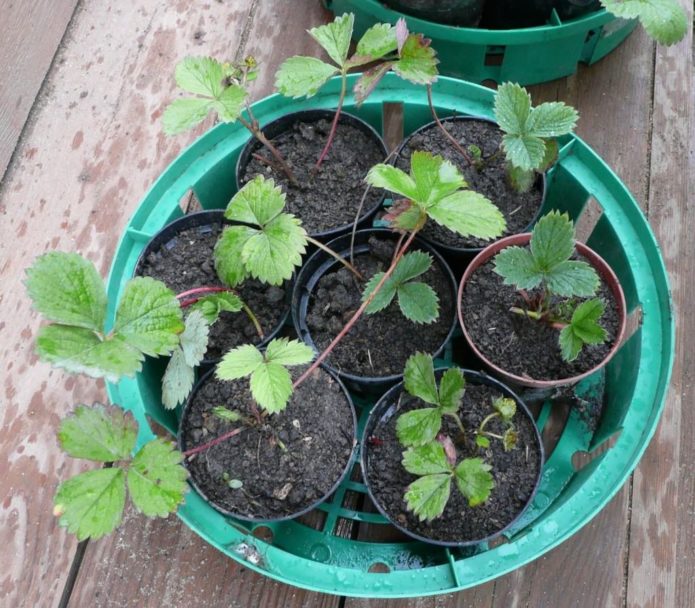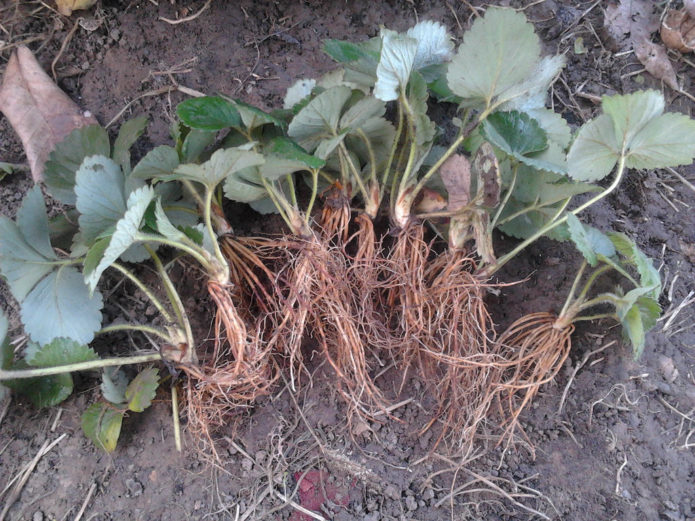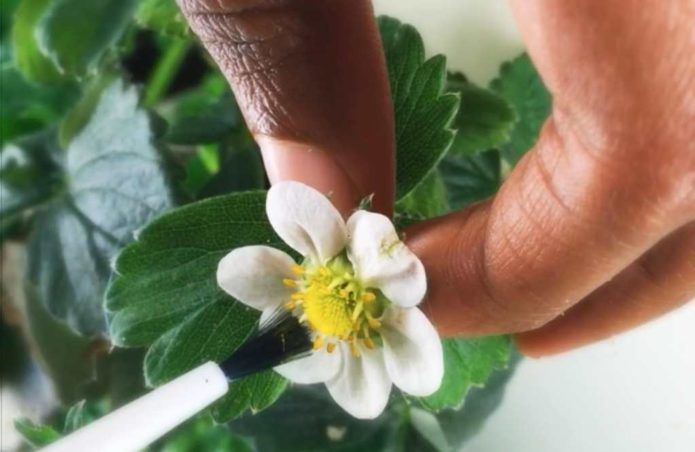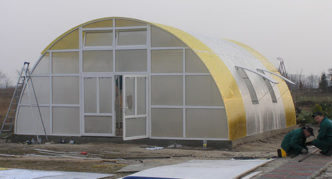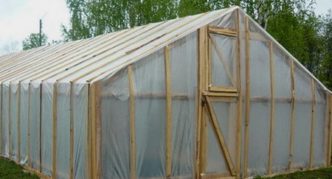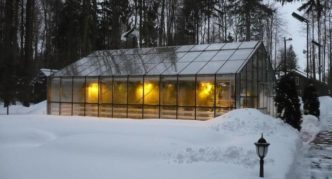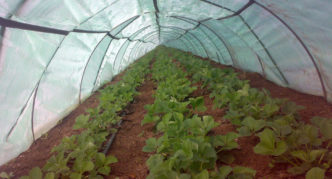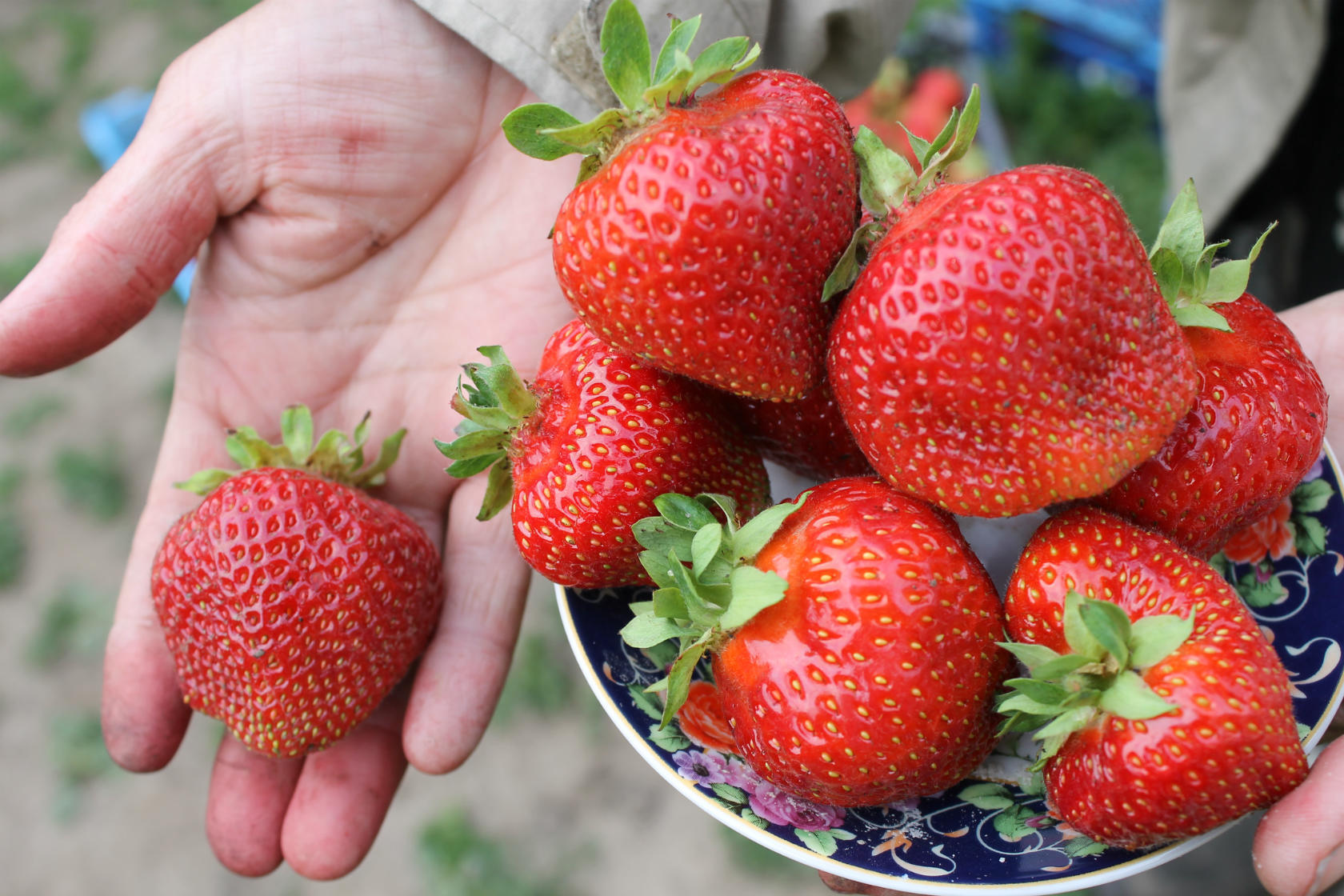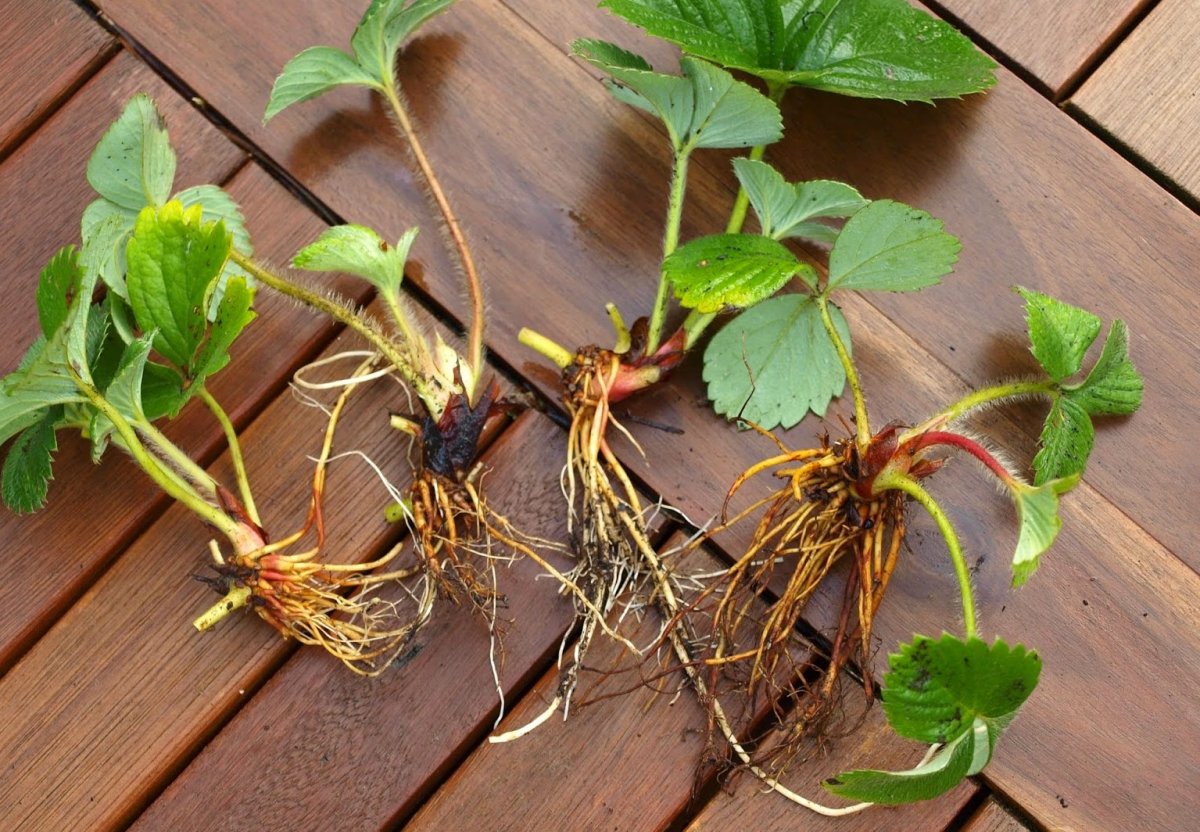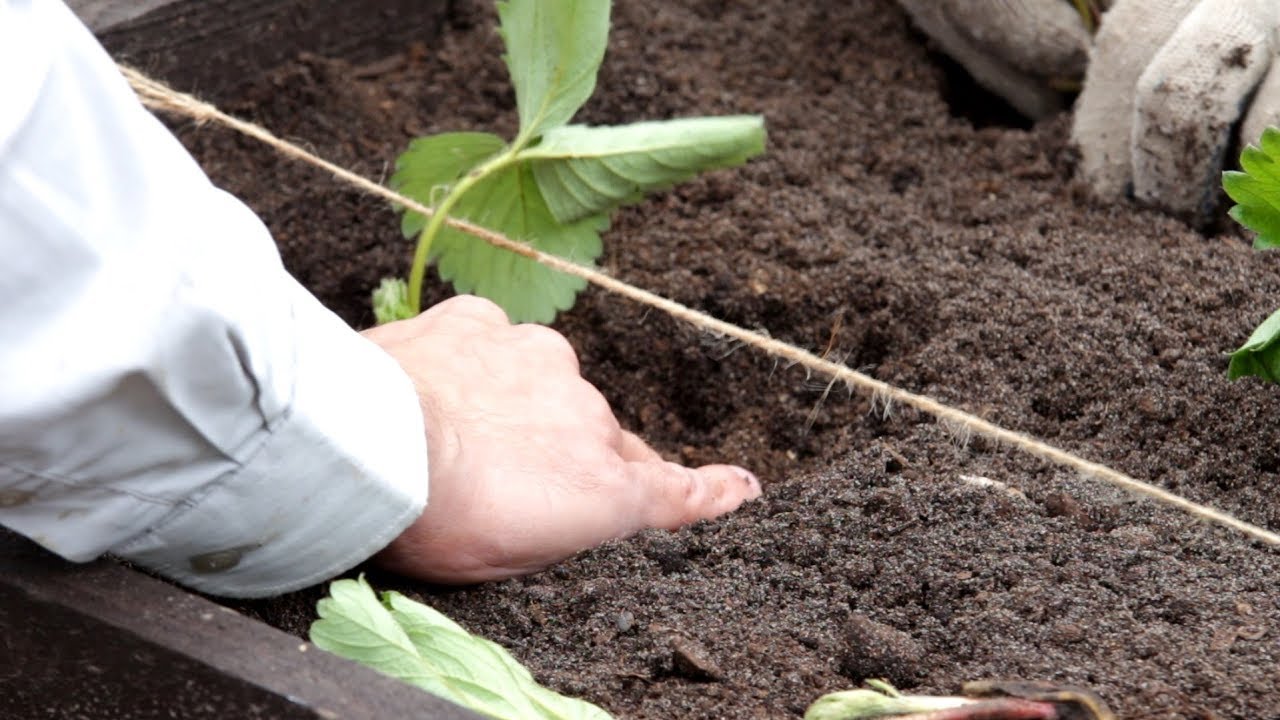Who doesn't love tasty and juicy strawberries? It contains many useful substances that have a beneficial effect on health and mood. It is said that women are happier and men are kinder when strawberries are included in their diet. Doctors advise to eat as many kilograms of berries per year as the person himself weighs. How not to try growing strawberries yourself in a greenhouse? The question is rhetorical - you can and should try!
Content
How to choose strawberries to grow in a greenhouse
In order not to be mistaken with the choice of strawberries for planting, you need to clearly understand why you are planning to grow this crop. Moreover, in a greenhouse. If these are sales, then pay attention to the size of the berries, ripening periods, transportation indicators. Experts note that it is best to sell medium-sized strawberries, rather than large or small ones.
If you plan to grow for yourself, then it's not a sin to experiment with varieties. The appearance of the fruit fades into the background. For winter growing, look at varieties that are undemanding to full daylight hours (neutral daylight or remontant). The climate of your region plays an important role. Provided that the greenhouse is made conscientiously, and care for the plant is constant, you can try varieties of various breeding.
We study greenhouse strawberry varieties
This wonderful berry comes in two varieties: regular garden and remontant. Ordinary garden strawberries yield once a year, but this does not mean at all that the culture is small-fruited and low-fruiting. Breeders are constantly bringing to the market wonderful varieties of strawberries that amaze with the size and taste of the fruit.
The repaired variety is capable of bearing fruit several times during one growing season. Many varieties of these strawberries can bear fruit all year round with proper care.
In the greenhouse, you can plant both regular garden and repair strawberries. Fortunately for gardeners and gardeners, the greenhouse allows you to grow crops, regardless of climatic features and ripening times. After all, if you really want to feast on berries or sell them all year round, you can build a winter greenhouse. And strawberry varieties for greenhouses will not let you down!
It is worth noting that garden strawberries in a greenhouse bear fruit from a week to two months earlier than in ordinary open ground.
Table: varieties of remontant strawberries
| Variety name | Characteristics of the variety | Features: |
| variety Maherauch |
|
|
| grade Zarya |
|
|
| Festivalnaya |
|
|
| English variety Red Gauntlet |
|
|
| French variety Mount Everest |
|
|
| Queen Elizabeth. |
|
|
| dutch remontant strawberry Sonata |
|
|
Photo gallery: remontant strawberries
- Strawberry variety Zarya tolerates light frosts well
- Strawberries of the Maherauch variety have a very high yield
- Festivalnaya strawberry variety has a compact bush with few leaves
- Strawberries of the Red Gauntlet variety are highly resistant to fungal diseases and adaptability to greenhouse conditions
- Strawberry variety Mount Everest was bred in France, but it also feels good in greenhouses in Russia
- Strawberry variety Queen Elizabeth is distinguished by its large and tasty berries, as well as unpretentiousness, which is rare for strawberry culture
- Strawberry variety Sonata is excellent for indoor use, resistant to mite parasites
Video: Queen Elizabeth strawberry variety
Table: varieties of garden strawberries for the greenhouse
| Variety name | Description of the variety | Features: |
| Mashenka (Moscow Jubilee) |
| excellent grade for transportation and storage |
| variety Baron Solemacher |
| abundant yield |
| Zenga-Zengana variety |
| hardy |
Photo gallery: varieties of ordinary garden strawberries
- Strawberries of the Moscow Jubilee (Mashenka) variety are perfectly stored and transported
- Strawberry variety Baron Solemacher gives a bountiful harvest (up to 0.5 kg per bush)
- Zenga-Zengana strawberry variety, with good care, forms berries weighing up to 300 grams
Video: Mashenka strawberry
Methods for growing strawberries in a greenhouse
There are many ways to grow strawberries in greenhouses. To date, several proven techniques are used that bring the most striking and significant results in obtaining a harvest and facilitating crop care.
Dutch technology: all ingenious is simple
This is the most convenient way, which is why it is also the most popular among farmers and gardeners. With this growing method, a black film is used in which slots are made for the strawberry bushes. The film does not allow weeds to appear, moisture evaporates, ripe berries remain clean. Black attracts more light, but for strawberries it is heat and photosynthesis. Ripening begins earlier, the number of fruits increases.
Also, the essence of the technology lies in the continuous renewal of seedlings. The Dutch method is called the simple forcing method. After harvesting, the fruiting plants are thrown away, and the ground in the greenhouse is planted with new strawberry bushes. This is done in order to surely get the berries earlier (than the second harvest of the same bushes) and only the most excellent and healthy ones.
For planting according to the Dutch method, it is preferable to use varieties with high yields: Marmolada, Sonata, Darselect, Maria, Tristar, etc.
The planting interval is usually 1.2–1.5 months. The preparation of seedlings is done with pre-made outlets.
Remember where Holland is. This is not the best geographic location for such a sun- and thermophilic berry like strawberries. However, today the Netherlands occupies one of the leading places in the quantity and quality of strawberries grown.
Video: strawberries under a film
Growing on shelves
The advantage of this method is that there is no need to tinker with the ground, since the technology does not involve permanent plant transplantation. Rather, on the contrary, the rack method gives one strawberry bush time to bear fruit as much as necessary (if it is suitable), and a person - the opportunity to facilitate his work and get a harvest all year round.
Racks are different: with hydroponics (water with a nutrient substrate and oxygen supply), earth, metal, wood, plastic, etc. The main characteristic of such a system is its convenience. Firstly, the planting area increases, and secondly, it is convenient to care for strawberries. All landings are in sight, everyone has enough heat, light and water.
The upper racks need to ensure constant watering, as they will dry faster, and the lower ones - sufficient light, since the upper ones will overlap them.
Photo gallery: different racks for growing strawberries
- A metal rack with strawberries can be covered with agrofibre
- A shelf-shelf under containers with strawberries is convenient because you can easily remove and put individual bushes
- Racks allow you to increase the planting area of strawberries
Video: growing strawberries on shelves
Warm ridges
A distinctive feature of this method is the preservation of heat inside the garden where the strawberries grow.
The essence of the technology is to keep as much carbon dioxide as possible inside the drainage system. It is he (as well as a number of other substances that enter into a complex chemical process with each other) that gives warmth to the roots during cold seasons. Nutrients remaining from the vital activity of microorganisms in the soil will freely flow to the roots of strawberries along with water, oxygen and gas.
Warm ridges are arranged as follows:
- The ridge needs to be formed 1.2–1.3 meters wide.
- Next, using a shovel, you need to make a central furrow.The width of the furrow is about 60–65 cm, the depth is 20–25 cm. To the sides, the depth can be made for half a shovel, that is, slightly less than in the middle.
- In the furrow, you need to lay tree branches, clean plant residues, neutral soil. All this will serve as a drainage channel - a store of heat and nutrients.
- Berry bushes should be planted in two rows with a distance of 20 cm. Before planting, the roots of the seedlings are shortened so that they fit well in the pits and do not bend up. This greatly affects the growth and development of the entire plant.
- A warm ridge must be covered with mulch: straw or peat; it is possible to cover with agrofibre with double insulation.
In the western regions, such ridges make it possible to grow strawberries all year round, even in a foil greenhouse. Provided that during especially frosty periods, the average temperature in the greenhouse will be maintained to the optimum point with the help of additional heating.
The higher the ridge, the warmer the plant root system.
Video: how to make a warm strawberry bed
Growing strawberries in pots
Mainly small-fruited remontant strawberries without whiskers are grown in pots. It is very good to plant varieties such as Alexandria, Ali Baba, Seasons, Snow White, Weise Zolemacher.
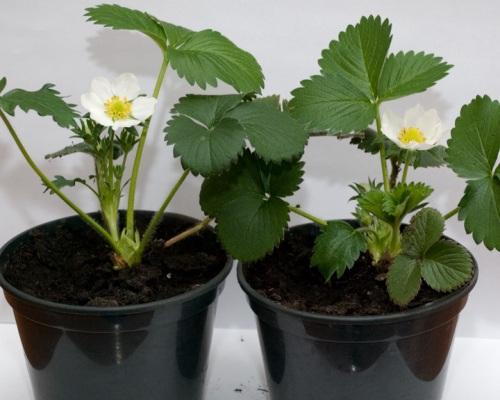
At first, the pots will need a small diameter, as the strawberries grow, you need to increase the capacity
If you decide to choose a potting method, be sure to lay drainage on the bottom of the container: moisture can stagnate in pots, and strawberries really don't like it, they start to rot and get sick. Therefore, be sure to add a good layer of drainage shards before planting. Large pots can be stacked in two layers with compost.
This method works well for growing berries vertically. The pots take up little space, the strawberries cascade down, which is not only effective but also aesthetically pleasing.
There are different pots: multilevel, with pockets, in the form of cylinders, discs and barrels. The most common option is combined multilevel with pockets.
Video: potted strawberries
Alternative breeding methods
What gardeners do not invent for growing strawberries. They put in car tires, sheets of construction slate, pipes with slots, polyethylene bags, and various kinds of boxes. And all these methods have a right to exist, since each person is comfortable in his own way. For some, in the foreground - saving space in the greenhouse, for others - the convenience of watering or lighting.
Among these methods, the growing method in PVC pipes has gained the most popularity. With this technology, it is very convenient to place seedlings (in a slot), water it, you do not need to fight weeds, you can save a lot of space.
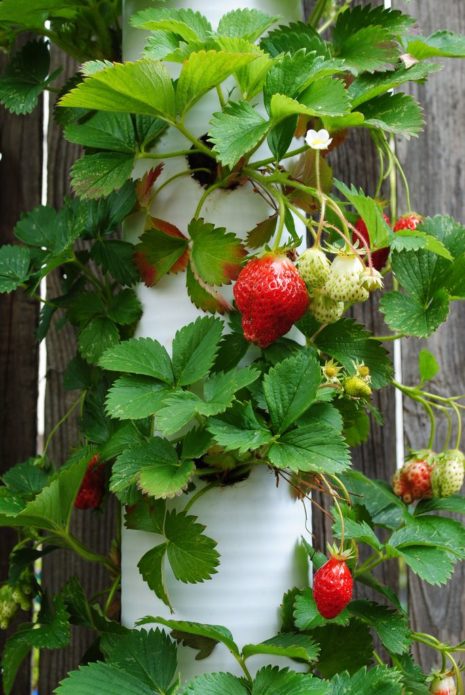
PVC pipes are easy to design for strawberry seedlings, thus creating a whole column of vertical ridges
Video: vertical cultivation of strawberries
Greenhouse cultivation technology
There are a number of basic rules and simple algorithms to help you get things right when planting and growing strawberries in a greenhouse, even if you are new to the business.
Soil and seedlings
In about a year, it is worth preparing the soil and considering the seedlings in advance.
- Add peat or rotted residues to the ground a year before use.
- 1–2 months before planting, treat the soil against diseases (with prophylactic agents such as manganese diluted in water), fertilize with mineral complexes for strawberries and strawberries. Strawberries cannot tolerate acidic or alkaline soils. To get a good harvest, you need to maintain soil neutrality. And to keep track of this, it's a good idea to get a PH tester.
- Prepare a strawberry mustache in advance, which will be your planting material next season. Carefully remove the mustache from an adult bush, planting it in the ground and slightly digging it in. It will quickly take root, eventually turning into a separate new plant on which leaves and flower buds will begin to develop.
- The mustache must first be grown outdoors in the summer, and then transferred to a heated room.
- The root system is responsible for the abundance of the harvest and the survival of plants. Pay attention to which of the seedlings are ready for planting. They must have developed, healthy and strong roots.
- If you plan on replanting strawberries from an open field to an indoor one, you can simply remove all the leaves from the plant and place it in a cellar at -2 ° C. In this state, seedlings can be stored for about eight to nine months. Dormancy will not harm the plant, but it will be possible to plant strawberries in the greenhouse gradually and without fuss.
Pollination of plants
It is especially pleasing that most modern varieties are self-pollinated hybrids. Moreover, the "old" varieties require pollination. Therefore, when choosing strawberries for a greenhouse, you should pay attention to the mark "self-pollinated" in order to greatly facilitate the growing process.
Although this opinion is controversial among greenhouse gardeners. Many experts argue that any strawberry requires pollination if it grows indoors, that is, in a greenhouse.
In any case, you can and should play it safe. Pollination in small areas of the greenhouse is carried out manually using an ordinary brush. On a large production scale, it is more expedient to establish a hive with bees or bumblebees.
Greenhouse temperature
For planted strawberries in the greenhouse, it is necessary to constantly maintain a temperature of + 22-25 ° C. If you have a cold region and a heated greenhouse, you need to keep in mind an important point: only water heating is suitable.
Air heaters are very dry leaves and flower buds, strawberries grow poorly or die. Optimum humidity is at least 80%, during flowering - no more than 70%.
Feeding strawberries
Once every two weeks, you can do the following top dressing: dilute 100 grams of ammonium nitrate with superphosphate fertilizer into 10-12 liters of water. Strawberries respond to this procedure with active growth, lively color of leaves and fruits.
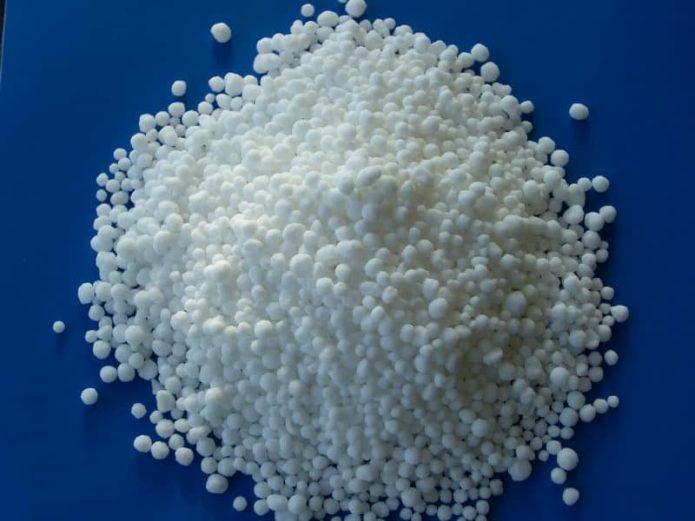
Strawberries can be fed with a mixture of ammonium nitrate with superphosphate fertilizer once every two weeks.
Lighting
Perhaps this is the most important point in the agricultural technology of greenhouse strawberries. There are three types of this culture that need different daylight hours, that is, its different duration and intensity:
- early ripe strawberries like bright sunlight, the length of the day should be at least 15 hours. Under good conditions, early maturing strawberries give an excellent harvest even in thickened plantings;
- strawberries with neutral daylight, that is, remontant, grow well and bear fruit with a relatively short (but constant) day. All year round, these strawberries need about 12-14 hours of daylight per day;
- late-ripening varieties of garden strawberries are very demanding on light and I will not even tie flower buds with a lack of lighting. And the disadvantage is less than 17 hours of daylight hours.
To solve the problem of lighting in the autumn-winter period, you need to purchase phytolamps. These are lamps of a special spectrum necessary for the normal growth and development of the plant.
The whole spectrum is needed for strawberries: for the development of green mass, buds, leaves, and for flowering, setting and pouring fruits.
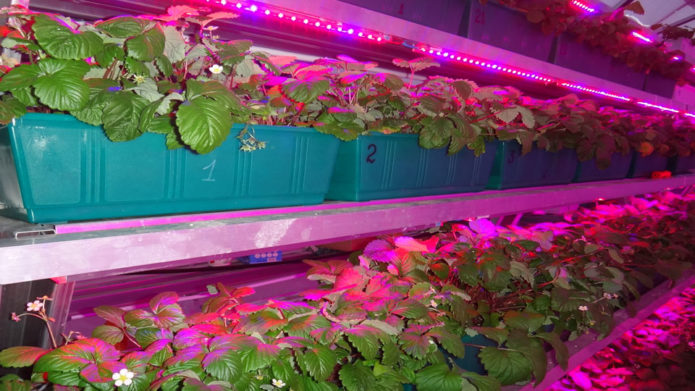
Additional lighting of strawberries in autumn and winter is a prerequisite for growing in a greenhouse
Video: growing strawberries under a phytolamp
Growing features depending on the type of greenhouse
A lot also depends on what kind of greenhouse you have - polycarbonate or foil. It should be borne in mind that a foil greenhouse will not be able to keep frosts for a long time, the temperature in it over time is much closer to the natural environment. However, a polycarbonate greenhouse is more expensive in terms of price than a foil greenhouse.
Here it is already worth thinking about why you are growing strawberries and whether planting will pay off your investment. Polycarbonate, of course, is more reliable and better for year-round cultivation, especially in areas of sharply continental climate.
In regions where autumn and winter do not reach -20 ° C and below, strawberries can be propagated in film tunnels. These are portable structures consisting of arcs and film. It is convenient to plant strawberries in them and prepare young seedlings for the next period.
Whatever material you choose for the greenhouse, in winter you will still need to supplement the culture. After a year, polycarbonate and the film lose their light transmission by about 20-30%, after three years - by 50%. It is recommended to completely change: the film every 3 years, polycarbonate every 7-10 years (depending on the quality). You may not notice whether the light transmission of the material has changed, but the plants will feel very much.
Photo gallery: types of greenhouses
- Polycarbonate greenhouse is an expensive but profitable construction
- The film on the greenhouse wears out quickly and loses its light transmission
- Winter greenhouses should be built from thick polycarbonate, for example 4 mm in two layers or 8 mm in one layer
- Film tunnels are suitable for regions where the air temperature does not drop below -20 ° C
Gardeners reviews
In general, strawberries are a light-loving plant, very light-loving, BUT light itself only promotes growth and development, while not being a material for growth and development. Give a lot of light, but don't give carbon dioxide or nutrients to the soil - you get an ugly semi-living plant. Everything is good in the complex. On the Internet there are "light tables" for various crops, including strawberries, but the tables themselves are about nothing, you need to see the whole picture, you know? Again, the stocking density of strawberries, the distance of light sources, the directivity / diffusion of the light flux, all of this affects. However, the lack of light is very easy to calculate: if the plant begins to "stretch", feel free to add light.
Repairing strawberry varieties can be grown all year round, not only in greenhouses, but also in an ordinary apartment. Strawberries do not like transplants, so you need to plant them immediately in the container, box or bag in which they will grow and winter. Elizabeth II is the most unpretentious variety for growing strawberries in a greenhouse or apartment.
We are experimenting with strawberries for the second year :) I have such a dream :) but so far it is chilly in our greenhouse. IMHO: either plant a variety of continuous fruiting somewhere in September to get a harvest by the New Year, and then in February, in the spring. But it's very strict to monitor the temperature. Night should not be lower than +19, daytime, respectively + 20 + 25. Troubled. But, that year I got an early one for myself :) In early April, there were good berries. But for sale, I don’t know ... They carry an inexpensive Chinese shaft. Even in winter.
My Clery is berry number 1. Firstly, if spotting, late blight or wilting rages on other varieties nearby, Clery may not feel it. Quite extended fruiting, with large plantings, about a month. Those. if the middle grades are already in full swing, then Clery you still harvested half. The berry is even, slightly elongated, shiny especially in the sun.The taste has a zest - it resembles wild strawberries, which come off without sepals, if anyone understands this, everything in it is in moderation, both sugar and sourness, very tasty. Clery comes off with sepals, sepals are always open, easy collection. Keeping quality is excellent, does not lose its presentation during 1.5–2 days of heat. We were never afraid to collect it in the evening. Customers like it very much, some ordered it separately from other varieties.
Growing strawberries in a greenhouse is a fun and enjoyable experience. It also pays off well. The main thing is that there is no attachment to the seasons, because the greenhouse can please with the harvest all year round. The demand for strawberries in winter is consistently high, so it doesn't matter whether you grow for yourself or for sale. For yourself - you have valuable vitamins, for sale - a valuable product.
